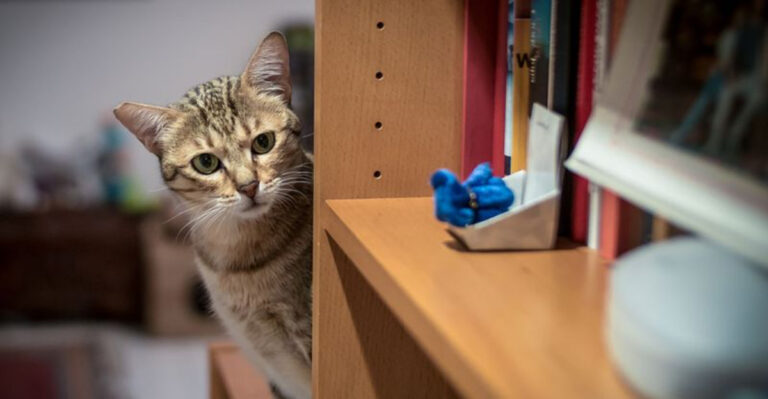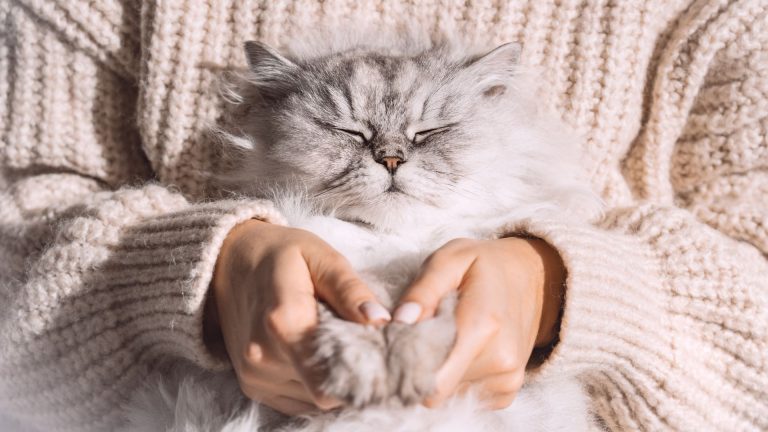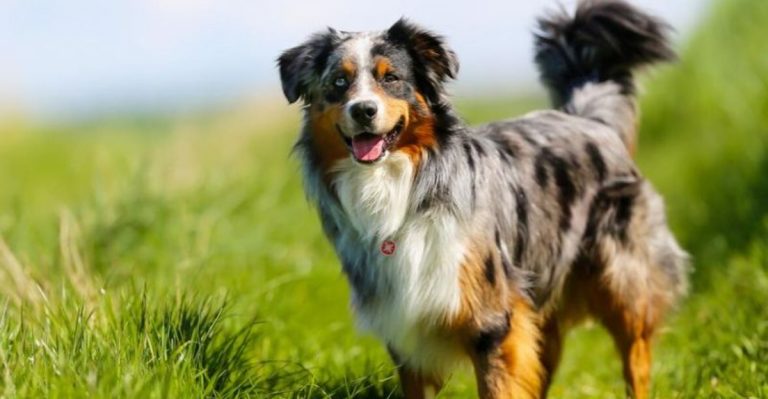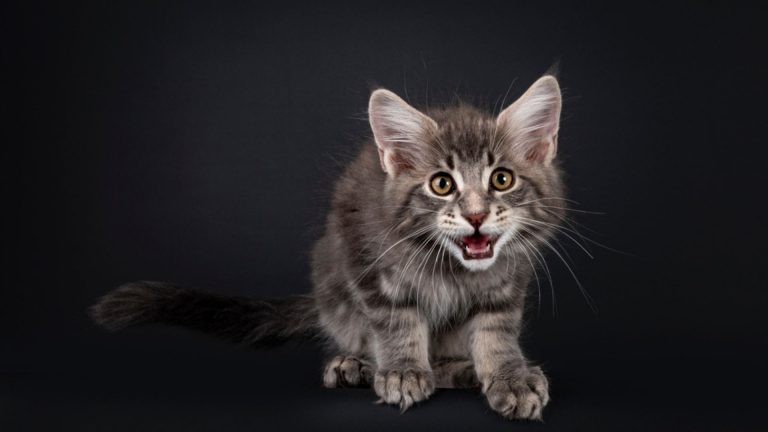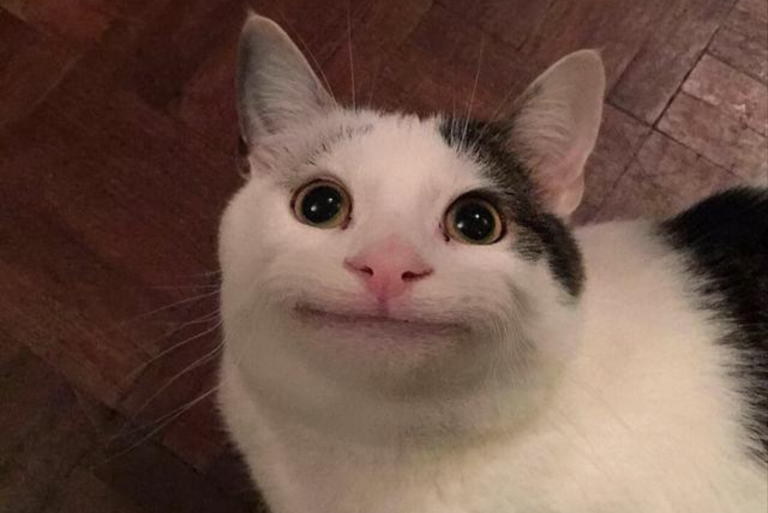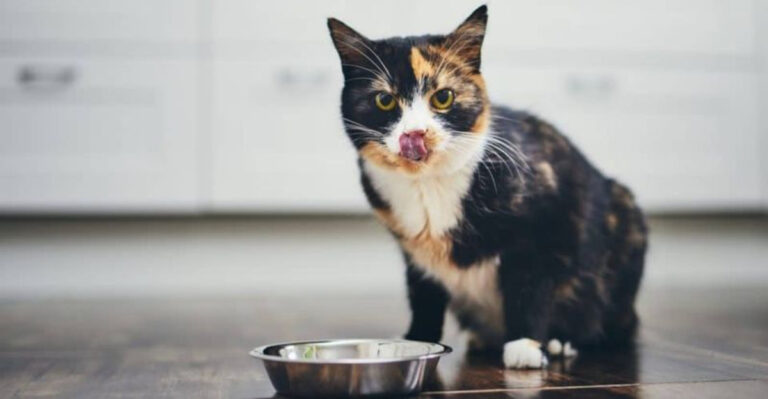8 Flowers Every Cat Paw-rent Should Avoid In Their Environment
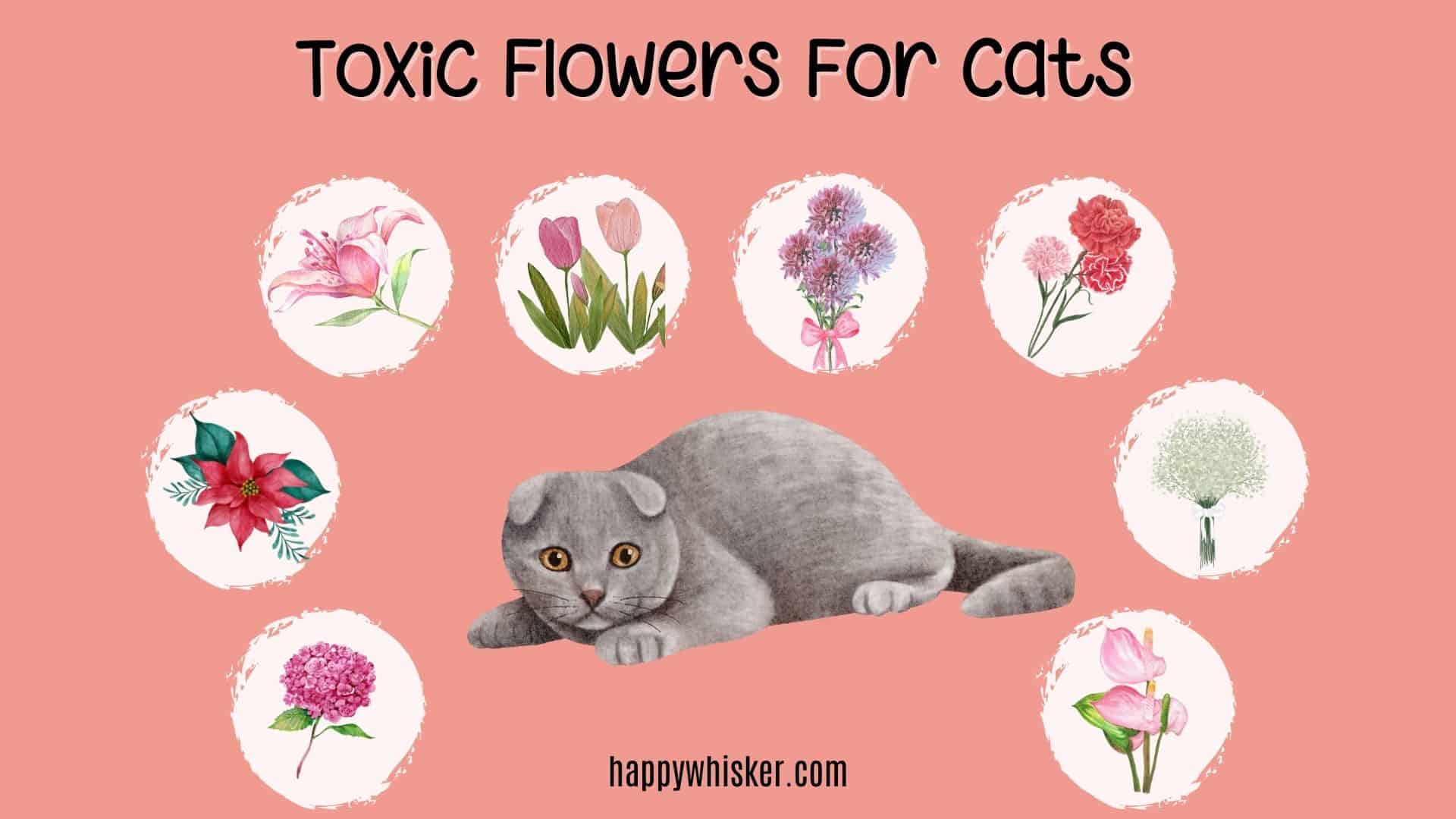
Meow, everyone! Today is the day to discuss an important topic for the sake of our feline friends – which flowers are toxic for them and therefore need to be avoided in our homes?
I adore having different flowers and plants in my home as they simply make it more alive and relaxing. However, every cat parent needs to be careful when choosing decorations for their home.
My cats are crazy about flowers, especially some of my green plants, which they often try to destroy. This is why I have to be very careful, and so do you.
So, to be a responsible cat owner and keep your kitties safe, here’s a list of toxic flowers for cats. Let’s check them out and see why they’re so toxic.
#1 Lily
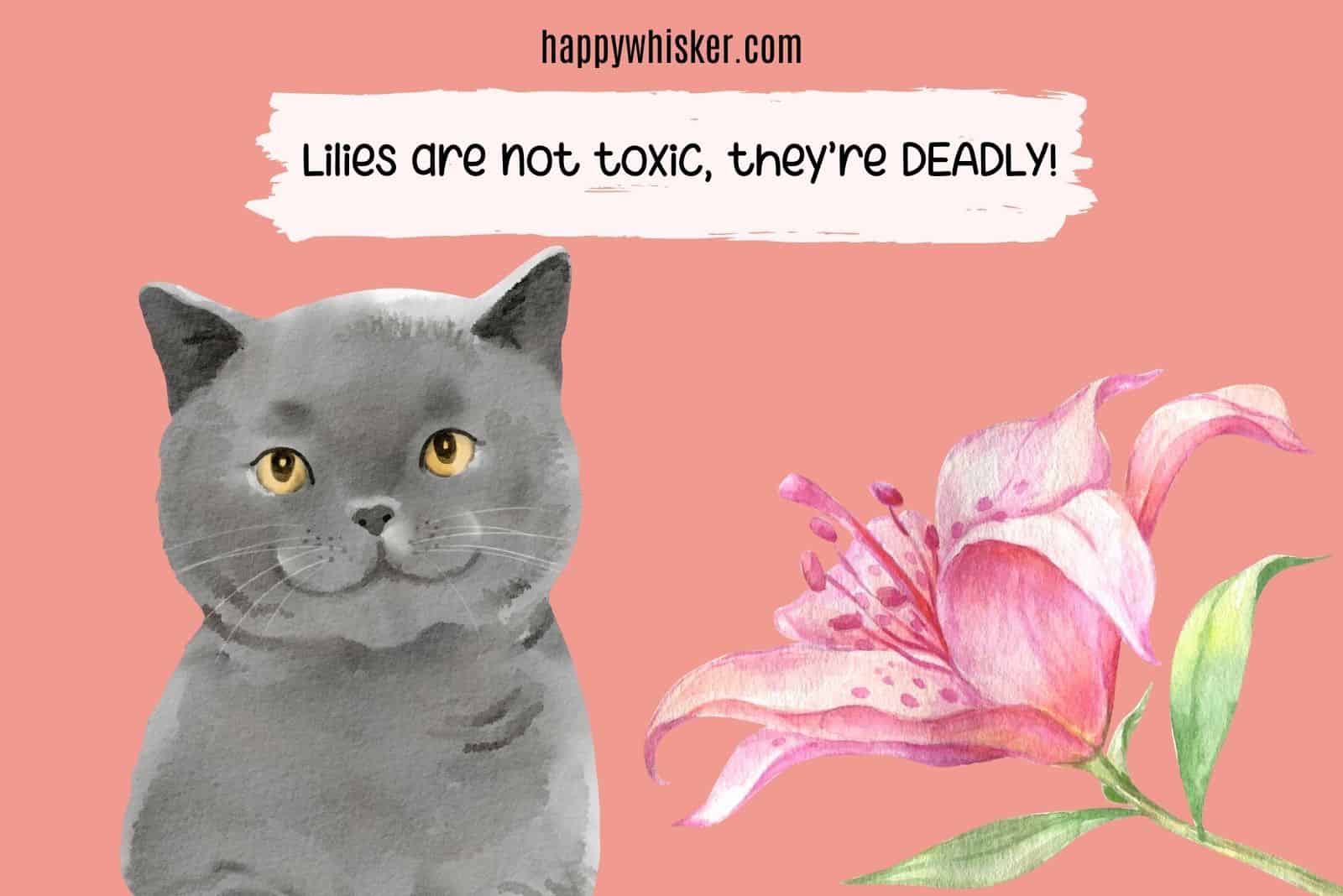
The lily is a beautiful flower, but if you’re a cat parent, then you should forget about it. According to the FDA (Food and Drug Administration), the entire lily plant is toxic for cats.
If the cat sniffs or accidentally ingests any part of the lily plant, including leaves, stem, flower, pollen, or even water from the vase, your cat may show signs of poisoning such as drooling, loss of appetite, vomiting, weakness, and similar.
Unfortunately, these symptoms can easily lead to kidney failure within just 24-72 hours, and we all know that doesn’t end very well in most cases. Noticing the first signs of lily toxicity is crucial so that you can treat your cat right away.
As one of my colleagues always says: “Lilies are not toxic, they’re DEADLY!”
#2 Tulips
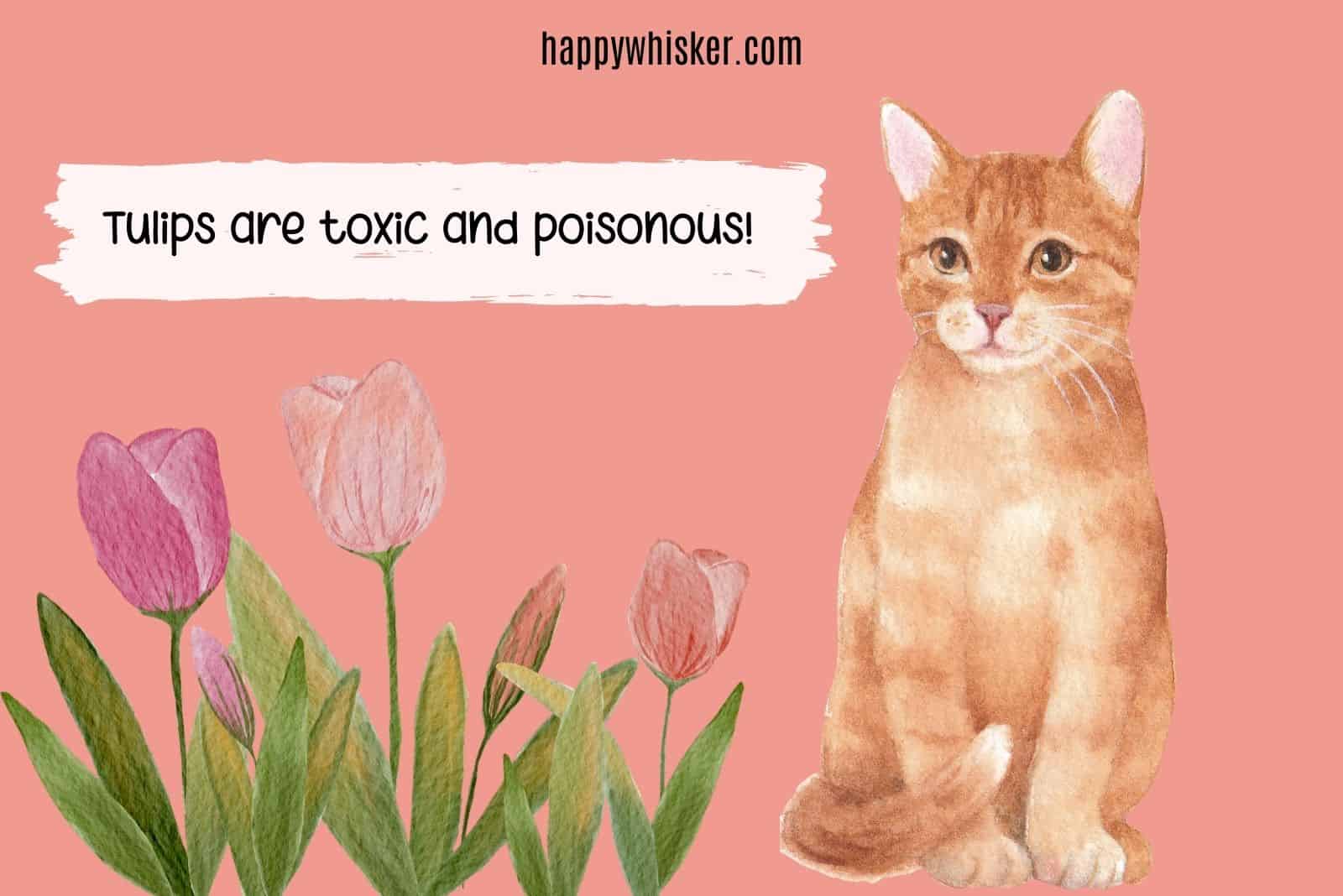
As much as I adore tulips, they’re a big NO in my home. I would never forgive myself if something happened to my cats because of the tulips that I brought in. Instead, I can always buy myself plastic fake tulips to decorate my home and keep my feline companions safe.
Why are tulips toxic for cats? Our cats are curious creatures that are often crazy about plants and flowers.
Tulips contain alkaloids, allergenic lactones, and glycoside, which makes them poisonous and toxic for cats. Therefore, if your kitty sniffs or accidentally ingests any part of the tulip plant, it could experience serious harm.
If such a thing happens, you should notice certain behavior changes and signs such as drooling, vomiting, diarrhea, and similar, so take your cat to the nearest vet clinic as soon as possible.
#3 Mums
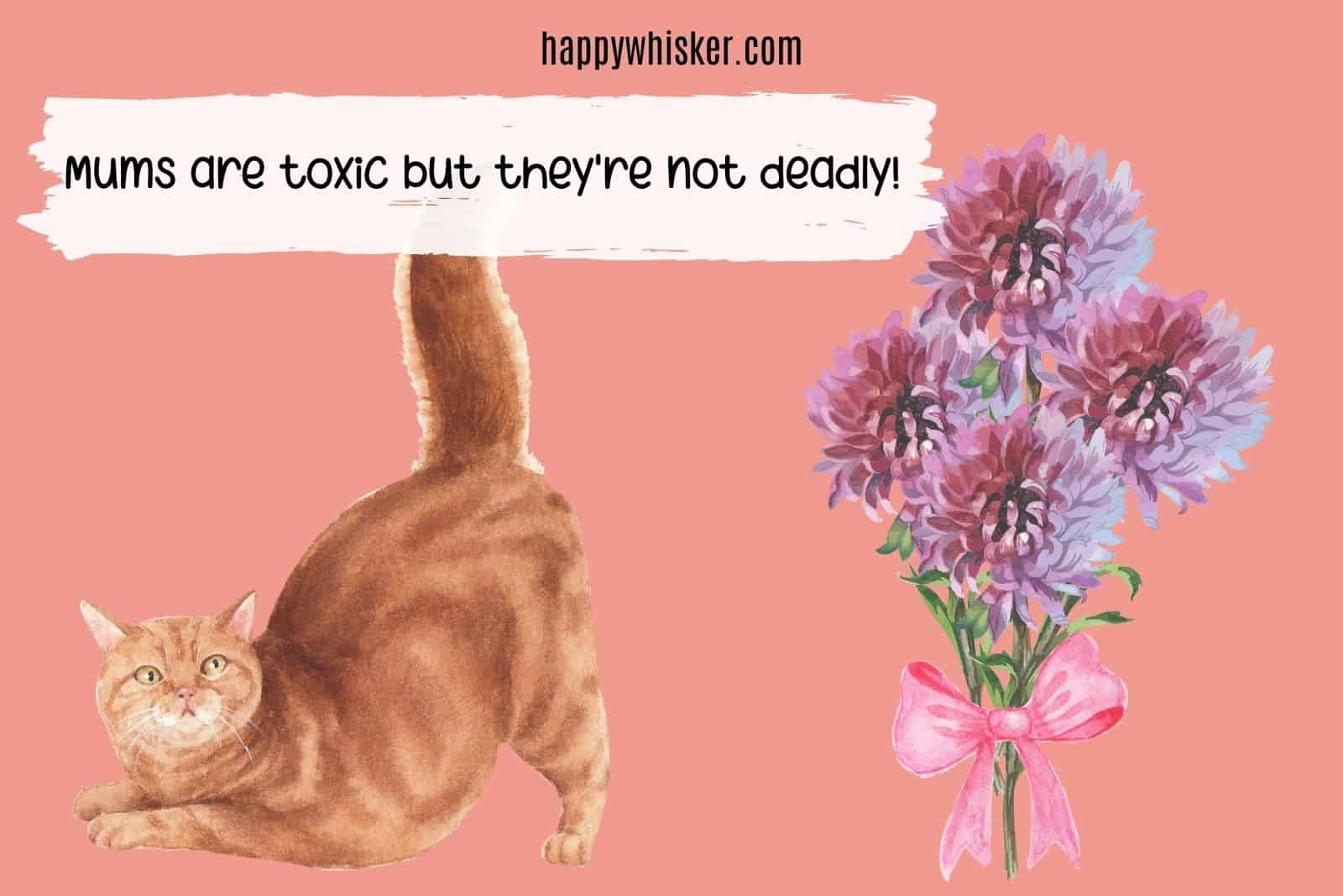
Mums are another beautiful flower that must be kept away from your cats. They’re toxic and can cause your feline friend to vomit, drool, or even experience skin inflammation, but luckily, they’re not deadly.
One of my friends had mums in her backyard. It seemed that her kitty couldn’t resist their smell and had to try them.
After a few minutes, she noticed her cat was weak and had started vomiting. My friend didn’t have a clue what was going on, but luckily, she took the cat to the vet immediately. She later said,
“It turned out that my cat ate mums, but the good thing was that I reacted quickly and took her to the vet. She recovered very quickly, but guess who doesn’t have mums in the backyard anymore?”
#4 Carnations

While carnations are also called Sweet William, it looks like they’re not so sweet when it comes to our felines.
Just like the previously mentioned flowers, carnations are toxic to cats and they can even trigger intestinal issues or skin irritation. Therefore, keeping these flowers away from your cats will help you keep them safe.
On the contrary, ingesting this flower may trigger mild toxicity in cats including symptoms such as vomiting, diarrhea, skin inflammation, weakness, and loss of appetite. Although these symptoms won’t last long, it’s still important to take the cat to the vet if such a thing ever happens.
#5 Baby’s Breath
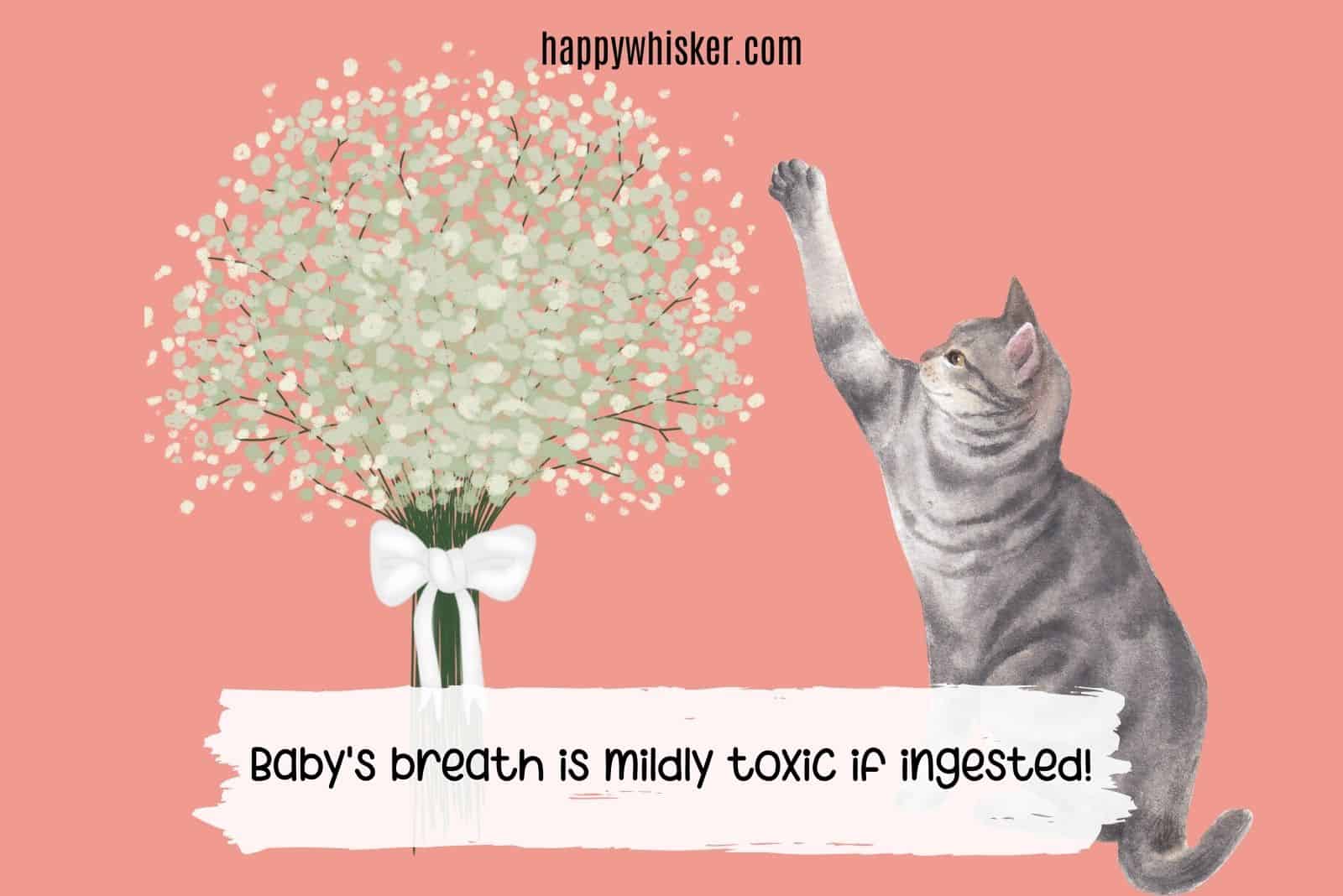
This flower, with its unusual name, might lead you to believe that it’s perfectly safe, but it’s not. The Baby’s Breath plant is also known as gypsophila, which is considered mildly toxic to cats if they ingest it.
That means that Baby’s Breath is another plant that your furry friends shouldn’t be around. If the cat ingests any part of the plant, it may experience symptoms such as weakness and lethargy, vomiting, diarrhea, or loss of appetite.
In that case, a vet visit is inevitable if you want to help your cat get back on track!
#6 Anthurium
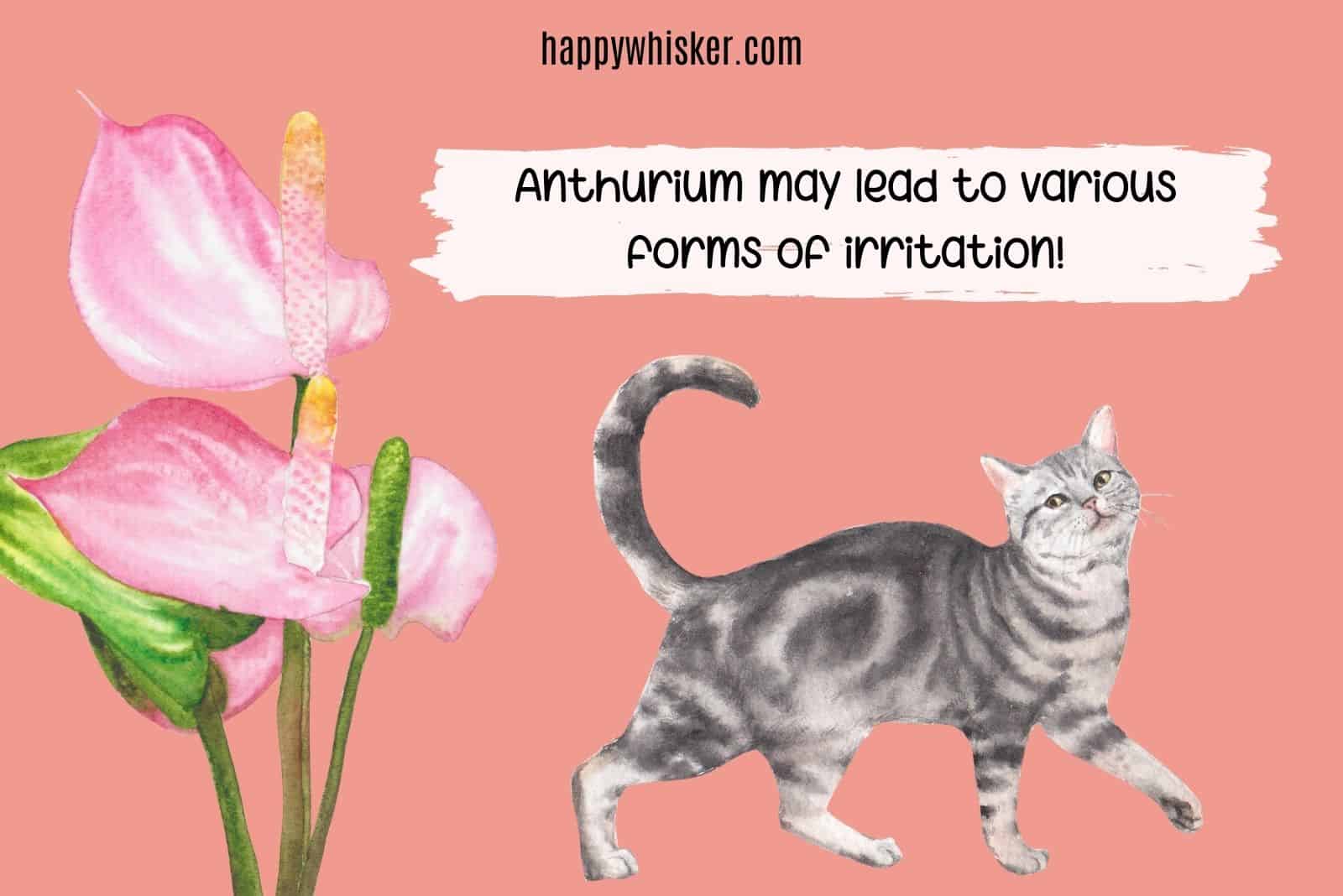
If you’re a cat parent, then simply forget about this gorgeous flower if you want to keep your cat out of trouble.
This flower contains calcium oxalate crystals that are released when it is chewed, and this may lead to various forms of irritation or even upset the gastrointestinal tract.
Some of the most common signs of anthurium toxicity include drooling, mouth irritation, loss of appetite, diarrhea, or vomiting. So, if you don’t want to put your cat at risk, (and I’m sure you don’t!), then avoid keeping this plant in your home.
#7 Hydrangeas
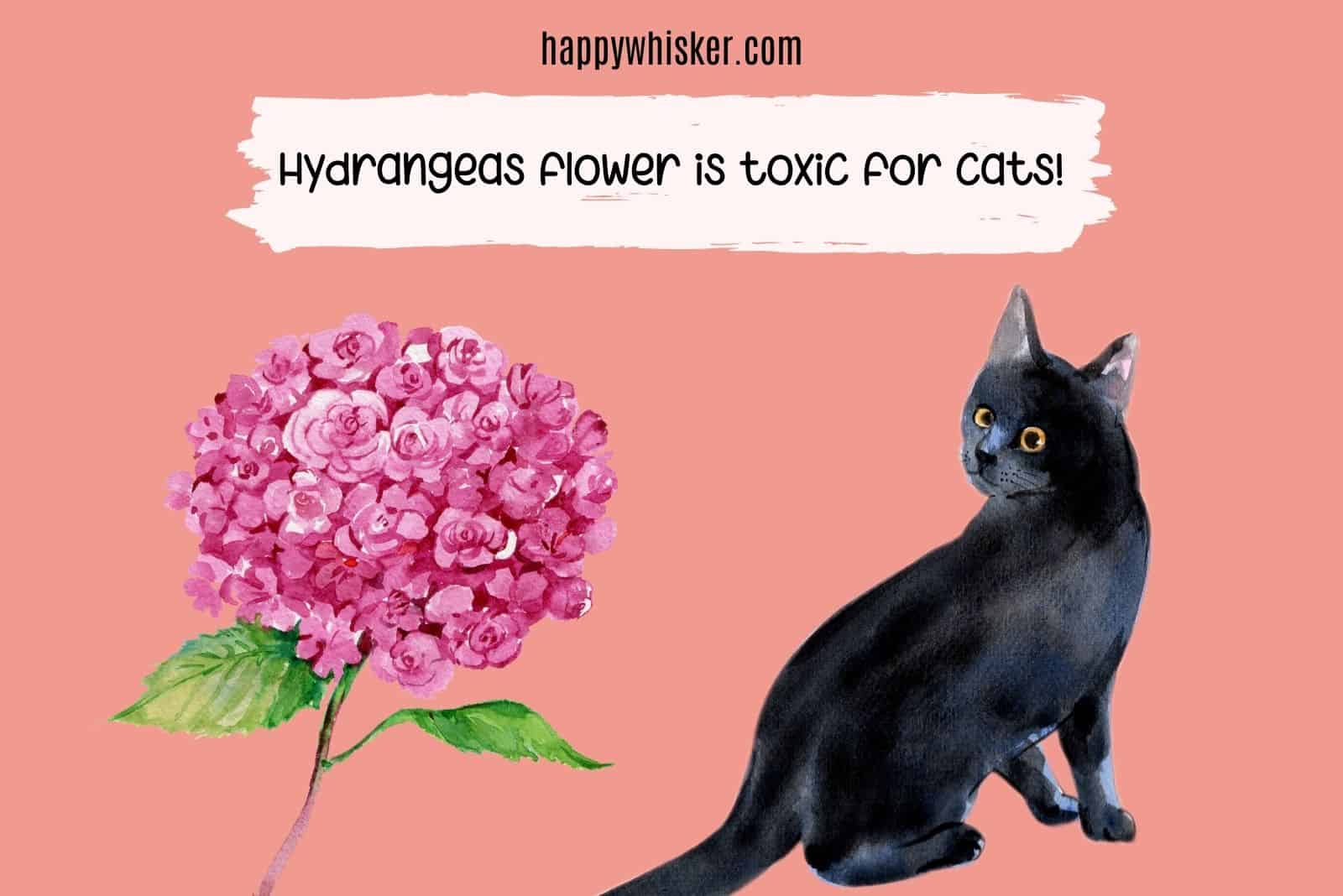
Hydrangeas always remind me of one of our rescue cats. A few years ago, a cat that came to the center was drooling and vomiting. After a few vet examinations, it turned out that the cat ingested huge amounts of hydrangeas.
The reason why Hydrangeas flower is toxic for cats is that it contains a chemical called amygdalin that produces cyanide when metabolized.
Smaller amounts may not cause your cat harm because it’s dose-dependent. But, if you wish to protect your cat from health risks, then you should definitely avoid having this plant near your cat.
#8 Poinsettia

Finally, I saved the best (or worst!) for last. Even today, I simply don’t know how my grandma’s cat survived after consuming Poinsettia.
Poinsettia is one of my favorite holiday plants, and this flower was a must-have in my grandma’s home. But, not anymore!
Her kitty would eat small amounts of Poinsettia every day, until one day there were only two leaves left. It was surprising that she didn’t show any worrying symptoms. While I was doing some research I found out that Poinsettia is actually toxic to cats.
The toxicity may be caused by ingesting leaves that contain sap, which can lead to issues such as various forms of irritation, vomiting, or diarrhea. Luckily, grandma’s cat survived without any issues and if you ask her, it looks like it was a very delicious snack.
Avoiding flowers that are toxic to cats, even a little, is of great importance, and key to having a purrfectly healthy cat. So, keep that in mind if you decide to bring a new plant or flower to your home!

